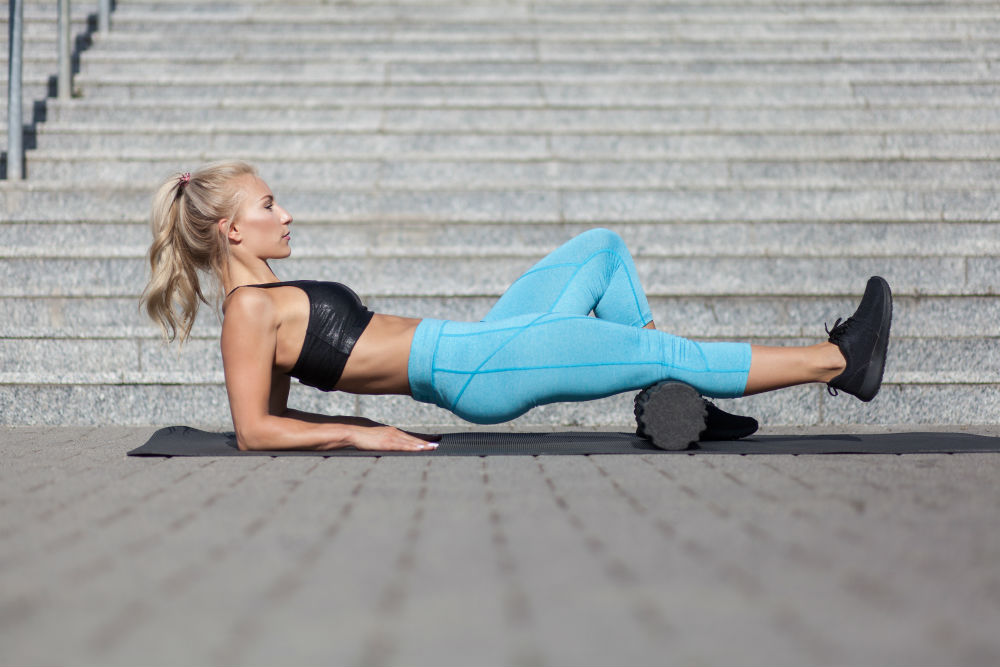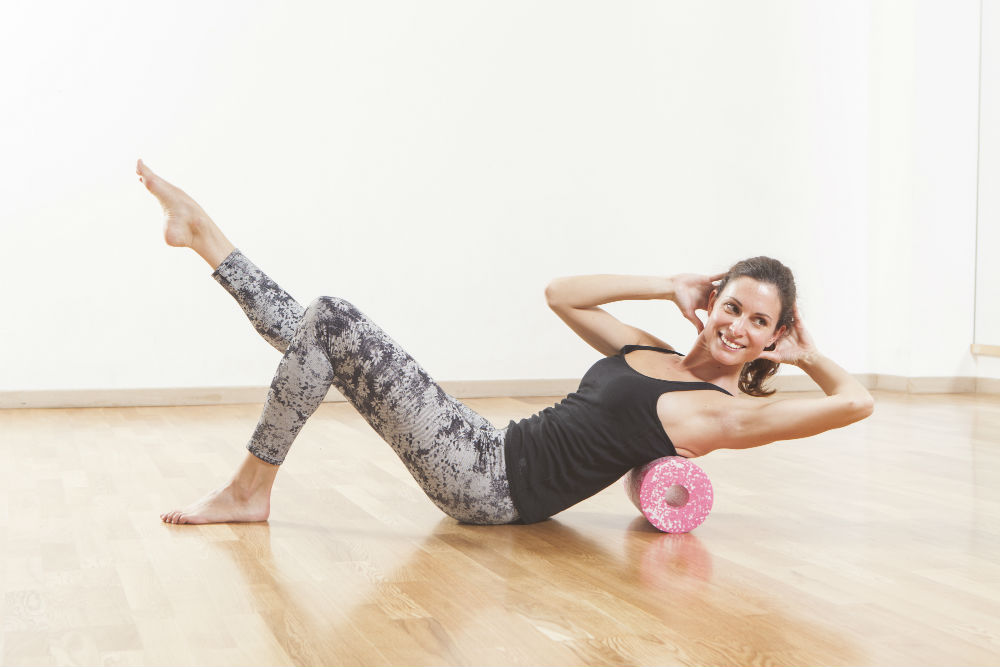
When people talk about endurance training or strength training, we all know what they’re talking about. However, it’s a different form of training that’s on everyone’s lips at the moment—fascia training. Experts are advising athletes to train their fascia alongside doing their ‘actual’ training as well. What exactly is fascia, why should you train it and which fascia exercises are suitable for this? pjuractive takes a closer look.
What is fascia?
Fascia is connective tissue. It is found on our muscles and ligaments, encasing them. Our organs are also enveloped by fasciae. It is present throughout the body and is responsible, among other things, for ensuring our muscles, ligaments, and organs retain their shape and that there is the necessary tensional force. Fascia also stops our muscles rubbing against one another. Together, fasciae keep our body upright and stabilize it. They also help improve coordination. Fascia are divided into three categories: superficial fascia, deep fascia, and visceral fascia.
Superficial fascia: As the name suggests, this is situated near the surface, in the subcutaneous tissue, and is responsible for protecting the tissue beneath it. Lymphatic vessels and glands are also located in the superficial fascia, and it helps protect neural pathways, too.
Deep fascia: This fascia is found deeper in the body and connects muscles with bones. Without it, we would be unable to move our arms and legs. It also prevents our muscles from rubbing against one another and encases our bones, blood vessels, neural pathways, and joint capsules.
Visceral fascia: This fascia protects our organs. It gives them the stability they need while at the same time ensuring there is a certain amount of motility if needed. This is because—in the event of an accident or during pregnancy, for example—the stomach, intestines and liver will make way and can move for a short period of time, without any loss of function.
What does fascia training actually involve?
Fascia training uses targeted massage and application of pressure across large areas to ease twisted fasciae or fascial adhesions and thus release tension. Targeted training of the fascia is also said to encourage circulation. If done correctly, fascia training can then alleviate joint and back pain and improve mobility in the musculoskeletal system. Generally speaking, it’s about making your whole body feel good. Experts recommend adding targeted fascia training to your training program, particularly after a taxing training session. This is because it is believed that the fascia is also to blame for aching muscles following intensive training. The fascia then apparently has microinjuries, causing the pain which we feel as sore muscles.

Fascia training—What options are there?
There are lots of different ways of training your fascia. Fascia training can consist of stretching and jumping exercises, bouncing movements, relaxation exercises and flowing movements. We’ve put together a list of a few options for how you can train your fascia:
Fascia training using Blackroll
The Blackroll is probably the first thing people will associate with the term fascia training. It is used to correct incorrect weightbearing and prevent postural deformities. It can also help avoid symptoms of excessive physical stress resulting from exercise as well as help with muscle recovery and boost circulation.
The Blackroll can be used to prevent back pain, for example. One exercise for this is the all-over back exercise, lying down. To do this, first sit on the Blackroll with your hands on the floor to support yourself, then slowly roll yourself down onto your back. The exercise itself consists in slowly rolling from your coccyx to your shoulders. This exercise can loosen the muscles in your thoracic spine.
The Blackroll can also be used to train the fasciae in your thighs and butt. Again, start by sitting on the Blackroll with your hands shoulder width apart to support yourself, then extend one leg and draw the other leg up towards you. If the Blackroll is in the right position, you will then also be able to lift your bent leg slightly and roll the fascia roller backward and forward under your butt.
These are just two exercises that only train a few areas of the body. There are also specific fascia exercises for the neck and shoulders, the chest, the stomach, the arms, and the calves.
Using Pilates to train your fascia
Pilates is a whole-body training method which can be used to train the entire muscle chain. Pilates exercises promote both strength and flexibility, as well as training the fascia. Even though Joseph Pilates—the man who devised the Pilates exercise system—knew nothing about fasciae, Pilates is still the perfect way to benefit your fascia. For Joseph Pilates, it was essentially about developing a form of exercise in which the body and spirit were in harmony with one another. Pilates therefore consists of specific breathing techniques, strength exercises, coordination, and stretching. It focuses primarily on the core. The aim is to specifically strengthen the muscles in the spine as well as the torso and the pelvic floor. All the movements performed in Pilates are especially gentle on our joints and ligaments and are intended to strengthen them. The balance, the standing balance, the bridge, the sun-up, and the leg lift are just a few of the many Pilates exercises. It’s best to do a Pilates course with a trainer—especially if it’s your first time trying this training method.
Regular fascia training can help give you greater freedom of movement, prevent injuries, and provide an increased sense of wellbeing. Try it out and add fascia training to your training plan!